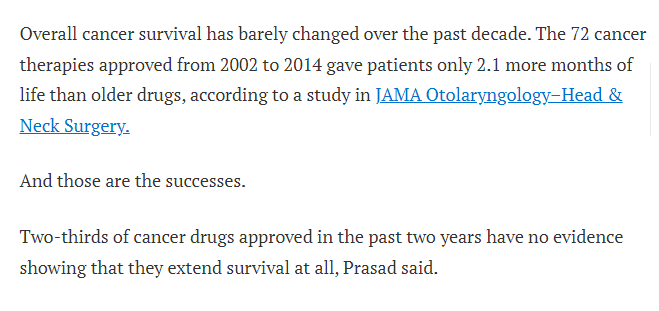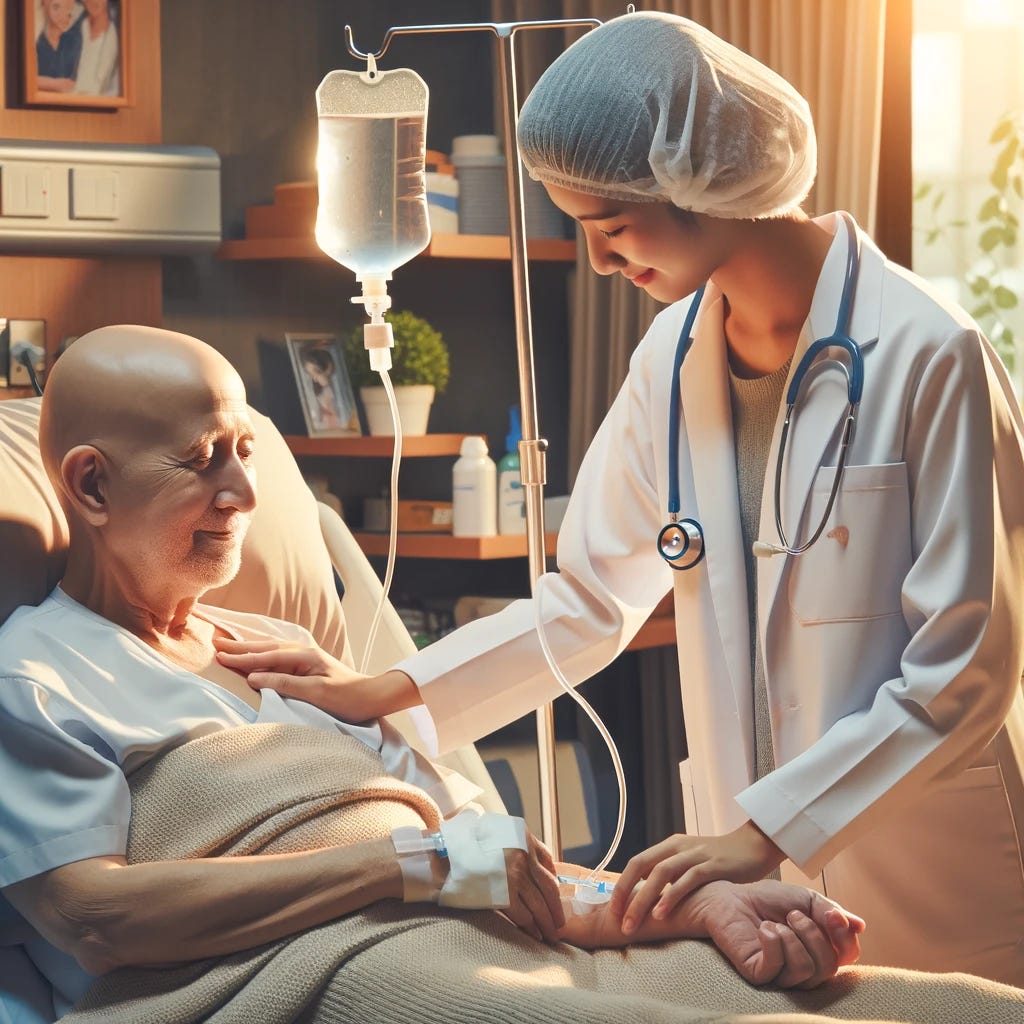
If you didn’t tune in for the riveting Senate hearing over the nomination of the new NIH Director Monica Bertagnolli, you might have missed the back-and-forth between Senators Sanders and Cassidy over whether the NIH should exercise march-in rights as to overpriced pharmaceuticals that were developed with NIH funding. Sanders had previously held up the nomination hearing for five months due to his opinion that the Biden administration should do more on pharma pricing.
This has now turned into a pressing issue for the Biden Administration. As of December 2023, NIST (the National Institute of Standards and Technology) asked for comments on a “Draft Interagency Guidance Framework for Considering the Exercise of March-In Rights.” The draft framework includes the issue of pricing, even though a NIST rule from March of 2023 expressly refused to allow march-in rights based on pricing. Quite a change in direction.
A number of policymakers have asked the Good Science Project for thoughts on this issue. This newsletter is our answer.
What Is This All About?
With apologies for rehearsing what is obvious to some people (but obscure to most of us), let’s start with some facts and assumptions behind this debate:
First, many people think that at least some pharmaceuticals are overpriced, particularly for the limited benefits they offer. For example, many new cancer drugs cost $100,000 or far more per year, even though they often don’t add much (if anything) to a patient’s lifespan:

Anyone can disagree about how much the government should try to control pharmaceutical pricing. The only point is that many people do feel that overpricing is an issue, and that our insurance system has gone too far in the direction of paying too much for drugs that offer little (if any) real benefit.

Second, some pharmaceuticals involve patents on discoveries where at least some of the research was funded by the NIH. But there probably are very few pharmaceuticals that would be subject to Bayh-Dole march-in rights—more on that point below.
Third, the Bayh-Dole Act of 1980 deals with patents on scientific discoveries where the research was funded by the US government. In the case at hand, biomedical patents are normally issued to universities that receive NIH grants on behalf of their professors/researchers. Bayh-Dole has a whole section (35 U.S.C. 203) on so-called “march-in rights,” which means that if a university researcher makes a discovery with federal funding, NIH can actually require the university to license the discovery to someone else if:
- The university hasn’t taken “effective steps to achieve practical application” of the discovery, or won’t do so in a “reasonable time”
- Note: the term “practical application” is defined elsewhere to mean “available to the public on reasonable terms,” 35 U.S.C. 201(f)
- There’s a need to “alleviate health or safety needs which are not reasonably satisfied” by the university
- It is “necessary to meet requirements for public use specified by Federal regulations and such requirements are not reasonably satisfied” by the university
- An “agreement required by section 204 has not been obtained or waived” or because a licensee under such an agreement has breached it.
- Section 204 requires that inventions/discoveries be substantially manufactured in the United States, so this means that federal agencies can seize inventions/discoveries that aren’t meeting that requirement.
Does Bayh-Dole Allow March-In Rights For Allegedly Overpriced Drugs?
The main debate here is this: if pharmaceuticals that owe their development to NIH funding are overpriced, why shouldn’t the NIH try to exercise this “march-in right” under Bayh-Dole? In other words, NIH could force the drug to be licensed to someone else who would make it available at a presumably cheaper price.
As seen above, march-in rights only apply in a few circumstances. Let’s immediately dispense with the third factor (“public use”) and the fourth factor (which is about whether something is mainly manufactured in the US). No one has claimed that those factors could be based on pricing.
What about the first factor—whether there are “effective steps” to make the discovery available on “reasonable terms”? There is a vigorous debate as to whether pricing should enter into consideration as to whether a drug is being made available “on reasonable terms”—a phrase that could theoretically encompass pricing. Indeed, the recent notice from NIST suggested that if the price is too high, then the drug isn’t being made available on “reasonable terms”:
If the contractor or licensee has commercialized the product, but the price or other terms at which the product is currently offered to the public are not reasonable, agencies may need to further assess whether march-in is warranted. Whether action may be needed to meet the needs of the Government or protect the public against nonuse or unreasonable use of the subject invention may include consideration of factors that unreasonably limit availability of the invention to the public, including the reasonableness of the price and other terms at which the product is made available to end-users.
NIST also suggests that government agencies need to ask questions like:
At what price and on what terms has the product utilizing the subject invention been sold or offered for sale in the U.S.?
Has the contractor or licensee made the product available only to a narrow set of consumers or customers because of high pricing or other extenuating factors? Has the contractor or licensee provided any justification for the product’s price or background on any extenuating factors which might be unreasonably limiting availability of the subject invention to consumers or customers?
Then there’s the second Bayh-Dole factor—whether there’s a need to “alleviate health or safety needs which are not reasonably satisfied” by the university with the patent in question.
NIST’s proposed rule suggests that pharmaceutical pricing might be relevant to this factor as well:
V. Is the contractor or the licensee exploiting a health or safety need in order to set a product price that is extreme and unjustified given the totality of circumstances?
A. For example, has the contractor or licensee implemented a sudden, steep price increase in response to a disaster that is putting people’s health at risk?
It should be noted that in reviewing this question, the agency is not limited to reviewing price increases; the initial price may also be considered if it appears that the price is extreme, unjustified, and exploitative of a health or safety need.
***
In legal terms, this is all a bit of a stretch—what NIST says here might be defensible, but it’s not obviously the correct interpretation, and it’s unlikely that courts would defer to the agency’s interpretation under the famous Chevron standard.
That is, one can argue that a wildly overpriced drug might not “reasonably satisfy” health needs or might not constitute an “effective step” to make the drug available. But if the NIH was expected to exercise march-in rights merely over the price of a drug, the statute should have been more specific that price could be a consideration in the first place.
It doesn’t mention price at all.
Moreover, if you did want a law to focus on the price of pharmaceuticals, you would have included criteria for deciding when a price is too high. For example, is a price of $100,000 too high? How would you know?
It all depends on what the drug accomplishes. $100k would be wildly overpriced if you’re talking about a bottle of aspirin, but what if a $100k leukemia drug saved your life at age 30 and gave you an extra 50 years of life for a mere $2,000 per year?
The Bayh-Dole Act gives no guidance on such questions.
Note that march-in rights under Bayh-Dole have never been exercised—not by NIH, not by anyone else. As a result, there is no body of caselaw or judicial interpretations of the legislative language or history. While the original intent of two people isn’t everything, Bayh and Dole themselves wrote in 2002 that no one ever intended for pricing to be a consideration here:
Bayh-Dole did not intend that government set prices on resulting products. The law makes no reference to a reasonable price that should be dictated by the government. This omission was intentional; the primary purpose of the act was to entice the private sector to seek public-private research collaboration rather than focusing on its own proprietary research.
The article also mischaracterized the rights retained by the government under Bayh-Dole. The ability of the government to revoke a license granted under the act is not contingent on the pricing of a resulting product or tied to the profitability of a company that has commercialized a product that results in part from government-funded research. The law instructs the government to revoke such licenses only when the private industry collaborator has not successfully commercialized the invention as a product.
My conclusion is this: Given that there was no obvious legislative intent to include pricing, and given that Bayh-Dole doesn’t mention pricing at all (let alone how to decide whether pricing is “too high”), any attempt by NIH to exercise march-in rights based solely on pricing that is “too high” would be immediately met with a lawsuit that NIH and HHS were acting arbitrarily and capriciously under the Administrative Procedure Act, and probably the Takings Clause as well.
I wouldn’t give the lawsuit a 100% chance of winning, but I wouldn’t bet against it either.
What’s the Empirical Evidence Here?
Leave aside the text and intent of the law. What might be the empirical impact of march-in rights here?
Some people have argued that using Bayh-Dole to seize the patents for overpriced drugs would be devastating to the US economy and to pharmaceutical innovation. E.g. this:
Allowing the government to march in because someone believes the price a company charges for its therapy isn’t “reasonable” — a completely undefined term — would be a devastating blow to the U.S. economy and the health of Americans.
Or consider these recently-filed comments from Research!America:

As well, the Information Technology & Innovation Foundation states that “using price as a basis for march-in rights would likely harm innovation across all sectors.”
These concerns are real, but likely overstated, for the simple reason that there are probably very few patents where the NIH could exercise march-in rights even if it wanted to.
Now, you might have heard that tons of NIH dollars/grants end up supporting pharmaceutical innovation. That is no doubt true in the broad sense, if you look at the pharmaceutical market from a decades-long perspective and trace everything back to all of the basic science that NIH funds.
One of the most famous articles here (Cleary et al., PNAS, 2018) found that “NIH funding contributed to published research associated with every one of the 210 new drugs approved by the Food and Drug Administration from 2010-2016.” This study was prominently highlighted in the Sanders memo that urges the use of march-in rights:

That sounds impressive, and NIH leaders have approvingly mentioned that same paper to me in conversation.
But the paper goes on to say that over 90% of the funding here is “basic research related to the biological targets for the drug action rather than the drugs themselves.”
That is a key point!
Remember that Bayh-Dole march-in rights don’t apply to anything and everything.
Under Bayh-Dole, march-in rights only apply to so-called “subject inventions,” a term that has its own special definition in 35 U.S.C. 201(e): “any invention of the contractor conceived or first actually reduced to practice in the performance of work under a funding agreement.”
In the NIH context, doing basic research on a target is not the same thing as actually inventing a drug or reducing it to practice. In other words, the NIH has to have funded the literal drug development, not earlier-stage research that might have been useful.
So, we cannot say that the NIH would have march-in rights as to all FDA-approved drugs. That estimate is highly useful in one context (trying to figure out the value of basic research), but it tells us nothing about whether NIH was involved at the step of actually inventing the drug.
What do we know about that point? I.e., how much NIH funding directly funds drug development that could be potentially subject to Bayh-Dole’s march-in rights?
It turns out that two of the same authors from that same PNAS 2018 article released another paper last year on that very question: “NIH funding for patents that contribute to market exclusivity of drugs approved 2010-2019 and the public interest protections of Bayh-Dole.”
The answer: very little.
To get more into details, the authors (Ledley and Cleary) looked at some 350,000 publications associated with $164 billion in NIH funding and 22,360 patents. Only 119 of those patents were cited in a key database (DrugPatentWatch), and only 10.9% of the drugs approved between 2010 and 2019 had even one NIH-associated patent. The overall conclusion?
Overall, only 1.5% of total NIH funding for applied research and 0.38% of total NIH funding for basic research was associated with patents in DrugPatentWatch. This analysis shows that very little of the NIH funding for research that contributes to new drug approvals leads to patents that provide market exclusivity and are subject to the provisions of the Bayh-Dole Act that promote the public interest in practical applications of the research, reasonable use and pricing, and a return on this public sector investment. This suggests that the Bayh-Dole Act is limited in its ability to protect the public interest in the pharmaceutical innovations driven by NIH-funded research.
More recently, Bhaven Sampat and Lisa Larrimore Ouellette have been compiling new and expanded data on how many FDA-approved drugs could even conceivably be affected by NIH march-in rights. Their paper hasn’t been released quite yet, but I have permission to quote this bit:
In this article, we examine the feasibility of using march-in rights to lower pharmaceutical prices by examining patents on drugs approved by the U.S. Food and Drug Administration (FDA) from 1985 to 2022. Our primary analyses focus on the 883 new molecular entities with at least one patent listed in the FDA’s Orange Book Since 1985. While 9 percent of these drugs have a public-sector patent, only 2.5 percent have only public-sector patents. The likelihood of a drug having all public-sector patents is lower for “blockbuster” drugs for which high pricing is most salient; for these drugs, firms also typically take out many patents. While the new march-in rules could be a useful tool to lower prices for a few drugs, their overall impact on prices will likely be limited. At the same time, characterizations of march-in as “seizing” private-sector patents or seriously harming U.S. innovation also seem overstated.
In other words, even if the NIH started to exercise march-in rights for the first time in history, at most this might implicate around 2.5% of drugs, and likely less than that when it comes to the blockbuster drugs that might arguably be overpriced.
Now, the Sanders memo does cite two other relevant papers:

The first paper from 2019 found that as to drugs approved by the FDA between 2008 and 2017, “the FDA approved 248 drugs containing one or more new molecular entities. Of these drugs, 48 (19%) had origins in publicly supported research and development and 14 (6%) originated in companies spun off from a publicly supported research program.”
At most, this paper implies that up to 25% of drugs might have patents subject to Bayh-Dole march-in rights, although the study didn’t look at that question (and the answer would surely be far less than 25%).
The second paper from 2021 was from the same team of researchers, albeit as to biologic drugs rather than small-molecule drugs. They found that “about two-fifths (42%) of new biologic drugs approved by the FDA between 2008 and 2017 had evidence of financial support from public-sector institutions or their spin-offs for their late-stage development.”
Again, however, the paper doesn’t directly look at which patents would potentially be subject to Bayh-Dole march-in rights.
In short, if you’re a supporter of march-in rights and of lowering pharmaceutical pricing, that is a reason to be dismayed at the limited possibilities here. On the other hand, if you oppose march-in rights under Bayh-Dole, one consolation is that barely any drugs would be affected (if any).
Conclusion
The main problems for NIH march-in rights are these:
- As shown by empirical data on patenting over several decades, the NIH would have few opportunities (if any) to exercise those rights;
- NIH would face an immediate and quite plausible lawsuit claiming that this is an arbitrary interpretation of the Bayh-Dole statute; and,
- NIH would not be able to fall back on any empirical evidence showing that march-in rights actually accomplish anything useful over and above any potential harm to innovation in the long term.
If you think pharmaceuticals are overpriced, it seems more promising to move forward on policies that allow CMS to behave like a normal market participant, rather than being forced to pay any price for any FDA-approved drug, whether or not the drug works very well or is worth even a small fraction of that price. And if anyone does move forward with NIH march-in rights, the least we can do is set up the initiative so as to collect empirical evidence on whether it works, i.e., whether the benefits outweigh the costs.
Thanks to Bhaven Sampat and Robert Cook-Deegan for helpful comments; any errors are mine.